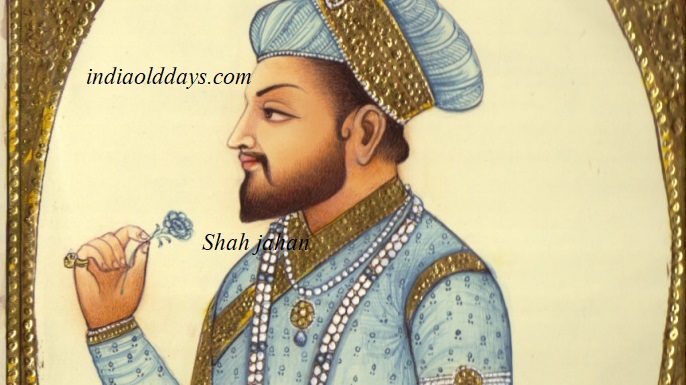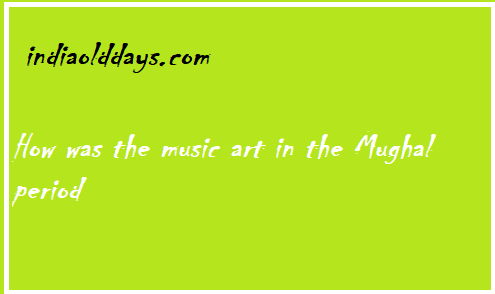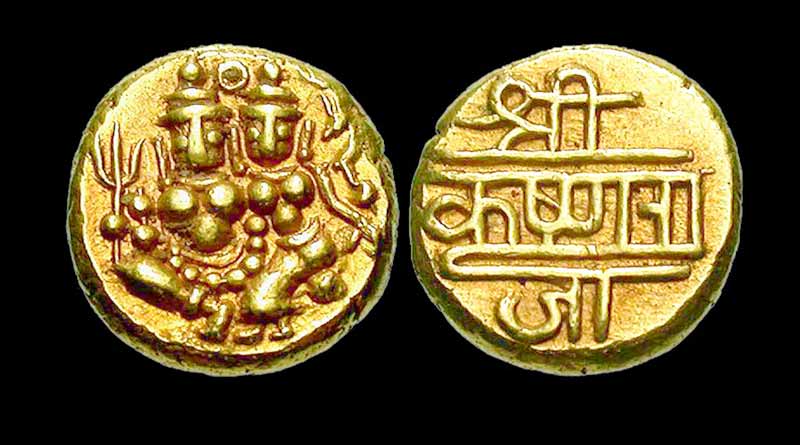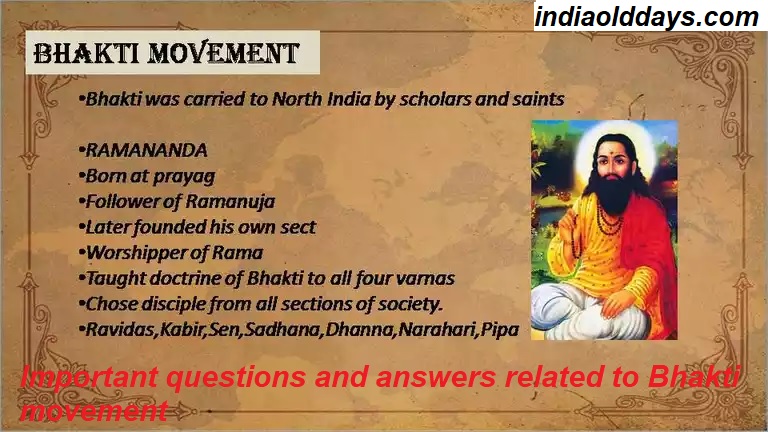Painting in Mughal period
Other Important Facts-
- Technical and financial status of Delhi Sultanate
- Religious Movement of Ancient India
- How was the Mughal Province Provincial Government
The famous Bihajad of Persia (formerly Raffel) probably came to India during Babur. the name of the only illustrator, Bihajad, in Tujuke – Babri. This is what Babur called Leading Chitrakar.
The foundation of Mughal painting was published during the reign of Humayun. During his exile, he received the services of two Persian painters named Mir Syed Ali and Abdusam. Paid auspicious collection of Mughal painting.
Mir Syed Ali was a disciple of Herat’s famous painter, Bihajad (formerly known as Raphael).
Some Jahangir was compiled from the works that AbdulSmad had prepared- Gulshan Chitrawali is compiled.
Akbar gave Mughal painting a streamlined form, he opened a separate for painting.
Meer Syed Ali and Abdusam Apart from are the names of 15 famous painters in Aine-Akbari. Genes were at least thirteen Hindu painters.
Among the major painters of Akbar’s time – dasvant, Basavan, Mahesh, Lal Mukand, Sawaldas and Abdul Smad were prominent.
The Mughal paintings are famous in the Mughal painting style, the earliest and prestigious Mughalata is the painting-Hajjnama, also known as Dastane-Amir-Hamza. A collection of about 1200 paintings in this manuscript gives flame of red, blue, yellow, cousin and black colors in the Jyoti masterpiece.
To complete the Hajjnama, Mir Syedad Ali was appointed as the Supervisor.
Characteristics of pictures of Hajjnama manuscript – Characteristics of specific Rajasthani or North Indian painting in the form of foreign or Viagya pang plants and their colorful flower flowers, nuances of architect ornamentation, furnishings and figurative elements with decorations etc. -Contents meet.
Mullah Alauddin Kazwini himself has written the book- naphaisula masira in hamjanama Humayun’s brain production information.
In Akbar’s time, painting-
In the reign of Akbar, another manuscript named Ranjamnama was prepared. In which there are pictures drawn by Daswant approaches (son of a kahar). The pictures of this noted painter do not meet elsewhere other than the Ranjamnamas.
Akbar is the first painter of his time and his work, Ranjamnama , is said to be the milestone in the history of Mughal painting.
Muhammad Sharif, the Rajdarbari son of Abdul Samad, supervised the depiction of the work of the Ranjamnama .
All the painters, in addition to phaarukh veg, painted the painters as mentioned by Abul Fazl, had helped in preparing the manuscript in this prestigious manner.
Daswant was later mentally disabled, and in 1584 AD. Had murdered himself. It has two other forms – Khandane-Tamuriya and Tutinama.
The center of the time of Basavan Akbar was a painter because he was perfect in drawing all the areas of painting – graphs, colors, image paintings and landscapes.
The leaves of Basavan are a masterpiece – a wandering wanderer in a deserted area with a Emaciated (thin) horse. The main painted manuscript of the work is the Ramayana and Akbarnama.
Reality and the end in the pictures of Akbar Namaa, which seems to be firm in the sense of self-esteem, pictures of plants, wildlife and landscapes are portrayed in pictures of rarely found flowers.
For the first time in the reign of Akbar, the mural paintings began.
In Jahangir’s time, painting-
Jahangir’s era was the period of the peak of Mughal painting. Jahangir established a painting room in Agra under the leadership of a famous artist of Herat, akarija.
In the era of Jahangir, the theme of handwritten texts was eliminated from the method used for painting, the introduction of image-painting (portrait of the person) and the tradition of depiction related to the life of individuals began.
Among the major painters of Jahangir’s time were – Persian Pharukhbeg, Bisnadas, Ustad Mansoor, Daulat, Manohar and Abul Hasan.
Pharukh–Beg who was admitted to the Mughal Gallery of the time of Akbar. During Jahangir, Shi (Farukh velocity) was painted on the picture of Sultan Adilshah of Bijapur.
daulat was a disciple of Farukh Beg. On the sayings of the King Jahangir, a collective portrait of his fellow painters – Bisan Das Govardhan and Abul Hasan etc. was made. Along with this, an image was brought by making.
Jahangir, his intention was painted by painter Bisan Das, with his messenger Khan Alam, to draw up a picture in the court of Persian Shah and that Shah brought many images of his rich and his family.
The equipment painters of Jahangir’s time were- Ostad Mansoor and Abul Hassan.The legate gave them the title of Nadir-ul-Aasarr (Ustad Mansoor) and Nadir-ud-jama (Abul Hassan) respectively.
Ustad Mansoor was a famous bird expert painter, while Abul Hasan was a master in pictures.
Ustad Mansur – Make many paintings of rare animals, rare birds and unique flowers. Among his important works – a Birla-Stork of Siberia and a unique flower of Bengal are particularly noteworthy.
Abul Hassan was the son of akarija. He was fortunate enough to live in the shadow of Raja shah, at the age of 13 (1600 AD), first of all, a copy of the picture of Saint Jan Paul of the director was ready.
Abul Hassan made a picture for Tuzuke-Jahangiri’s front page.
The picture is available once in a London library, in which numerous squirrels are painted in a variety of postures on a poplar tree. This picture is probably considered by Abul Hassan, but if the name of the names on the page is affected,If it is to be believed, it will be considered a joint work of Mansoor and Abul Hasan.
In Shah Jahan’s time, painting
Shah Jahan was more interested in architecture than painting, yet he encouraged painting.
During Shah Jahan there was a decrease in figure-color and color-coordination. There was a progress in drawing and border making in his time.
Shahjahan liked to make his paintings in Divine version. Famous painters of his time – Fakir Ulla, Mir Hashim, Murar, Hunar Muhammad Nadir, Anoop and Chitra were prominent.
A famous portrait of Shah Jahan is available in the Indian Museum, in which Shahjahan has been shown performing Sufi dance.
Painting during Aurangzeb’s time-
Aurangzeb had stopped painting as an anti-Islam.
But in the last years of his reign, he took some interest in painting, as a result of which some of his miniature pictures were received by hunting, executing and fighting.
After Aurangzeb, Mughal painters settled away, where many regional painting styles were developed.
Manuchi has written that – with the order of Aurangzeb, pictures of Akbar’s tomb were given to the lime.
Painting in Akbar’s time was the biggest feature of all-the effect of the Indian circular style in place of the smooth influence of the Iranian style, with which the pictures came in a triangular effect.
During the Jahangir era, special progress has been made in the form of hunting, war, and court scenes (Akbar), in the form of pictures of people-images (images) and natural-visions (animal-birds etc.).
Mughal carpet painters hesitated to create paintings on Muslim religious texts, but paintings on topics related to Hindu mythology and stories of Christianity were painted.
While praising the painting, Akbar has written that – The painter has a strange way of recognizing God.
Jahangir has written in his autobiography Tujuke-Jahangiri: – Whether any picture is made by a deceased person or by a living person, as soon as I see it, I am able to tell it as a painter’s work. If there is a collective picture, then I can tell their faces apart, that every painter has created each limb.
Percy Brown has said that along with Jahangir, the real spirit of Mughal painting has become deflated.
Chief painters of Mugal time-
Humayun Carpet Painting – Mir Syed Ali and AbdulSamsad
Akbar Painters – Leading painter – Daswant, best painter – Ustad Mansoor (animal-bird expert painter) and degree (Nadir-Ul-Asr), Abul Hassan- (Professor in the person’s illustration, Nadir-ul-jama)
Some specific pictures of Mughal times
- Wandering in a deserted place with a Emaciated horse; Picture of Basavan (Akbar)
- A picture of Adilshah, Sultan of Bijapur– Firooj Beg (Jahangir)
- On the order of Jahangir, a collective picture of Bisandas Govardhan and Abul Hasan and a picture of himself – Daulat
- A Birla of Siberian Stork-Ustad Mansur
- A beautiful flower-maestro of Bengal
- The portrait of Saint Jan Paul of Dutter – Abul Hassan
- TujukeJahangiri’s for front page – Abhul Hasan
- A picture is available in the Library of London, in which numerous squirrels on a poplar are painted in many currencies, it is considered to be the work of Abul Hassan, but due to the name of Abul Hassan and Mansur being both mentioned on the page, is believed.
Jahangir Kalin, a famous painter Manohar’s name – Tuzuke does not get to Jahangiri.
In the Mughal period, he was involved in the important illustrations of studying important details of European paintings in his paintings- Basavan, Keshavdas, Miskeen, Daulat, Abul Hasan etc.
Miskin was perhaps the best in European influencers.
Reference : https://www.indiaolddays.com/





